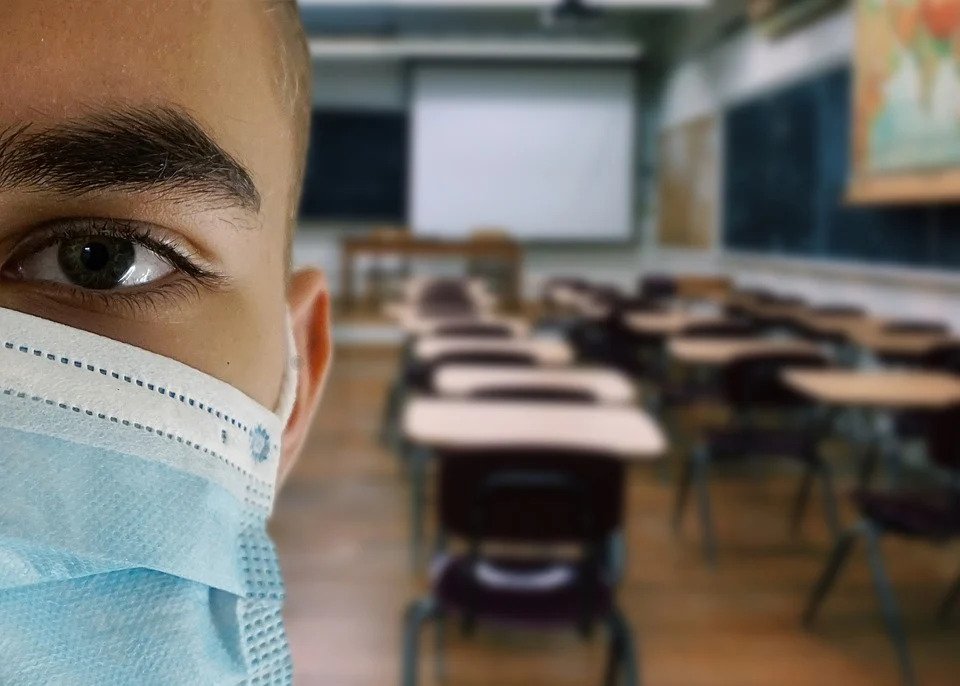In spring (2020), I called for in-person school to reopen after the initial quarantine, citing significant academic slide without in person schooling, as well as increases in mental and emotional issues among children and families, and noting little or no tangible gain for children, families or even our elderly by closing in-person schools (https://gurianinstitute.com/should-schools-and-families-lock-down-again-due-to-covid/). Over the last few months, you have likely seen published research and media stories detailing the issues that spring 2020 online schooling created.
Now, in July 2020, I was relieved to see the American Association of Pediatrics (AAP) publish its advocacy statement calling for “the coming school year to start with a goal of having students physically present in school.” However, a number of states and districts have announced that they are going online. This blog provides key strategies for making online schooling work, with the hope that school will become in-person as soon as possible.
What In-Person School Closure Does to Our Children and Families
Gurian Institute research on school closure and the move online shows seven significant significant issues economically, academically, and socially. These issues negatively affect millions of children and families.
- Children did not learn as well, on average, as they learned during in-person schooling, no matter how hard parents tried to take up the slack or school personnel tried to help remotely.
- In many areas, close to ¼ of students did not check in with teachers or were absent from the learning process, which not only affected academic slide in the spring but will further increase academic and educational slide down the line.
- More children were malnourished than before, especially among hard-to-reach families, and more children were emotionally and mentally at risk, including from unreported violence, child and sexual abuse, substance abuse, and suicide.
- Parents suffered significant trauma as they tried to manage work or unemployment along with children’s schooling, which increased situational trauma episodes and increased the trauma baseline for children over a multi-month period.
- Overall, lack of in person schooling created an increase in loneliness, and this particular collective trauma especially hit communities of color, making schooling and lack of in-school academic and emotional nurturing an equity issue.
- Because boys were also particularly hit by the closing of in-person schooling, the gender and achievement equity gaps that many schools have been working on over the last two decades resurfaced, with more boys than girls absent, tardy, under-achieving, and lacking educational success outcomes.
- Given that 70% of our special need learners are boys, all of the issues with online learning and lack of in-school-nurturing multiply in this particular population, and for boys in the millions.
The AAP confirms: “The importance of in-person learning is well-documented, and there is already evidence of the negative impacts on children because of school closures in the spring of 2020. Lengthy time away from school and associated interruption of supportive services often results in social isolation, making it difficult for schools to identify and address important learning deficits as well as child and adolescent physical or sexual abuse, substance use, depression, and suicidal ideation.”
Child-advocacy organizations like the AAP will hopefully continue to provide inspiration for school re-opening. GI joins them. However, some districts and schools are already considering either not reopening in-person or only partially reopening with most of school completed online again in the fall.
Ten Strategies for Helping Boys Learn in the Covid-19 Classroom
Given this reality, here are ten strategies you can use no matter what happens to your school or your child’s schooling this fall. These strategies grow from research on boys’ development and education, but can work well with girls, as well. For boys, however, and any at risk learner, these strategies are urgently needed, especially if all or part of school goes, again, online. Even though budgets are getting cut around the country, our GI training in these ten and many more comprehensive strategies and online schooling models is inexpensive and can provide holistic help for the various schooling options you are facing.
Five Essential Relational Strategies
The first five strategies are relational ones that involve keeping children and schools connected in a structured, concerted way with organic relationships and attachment that provide the foundation for successful online learning.
- Teachers/Staff as Student/Family Mentors. Make sure every appropriate staff member at a hybrid or online school becomes a mentor/coach/advisor to multiple students and their families. This strategy requires a school leader to assign students to advisors to students/families or for teachers, students, and families to form these relationships organically. This advisor/mentor calls, texts, and otherwise contact his/her mentees as much as needed, including to check in on homework completion.
- Physical Coaches as Life Coaches. Phys ed and athletics coaches who are underemployed in a shut-down or online schooling semester can now expand the “coach” role to take on multiple advisees both for physical health maintenance in the children, and for academic/social learning. Depending on expertise both athletically and academically, the coach can pick students to fit the academic strength (e.g. a coach who also teaches science can mentor science students and athletes) or, again, the students, families, and the coach can choose organically.
- On-Leave Teachers as Advisors. If some of your teachers are not going to return to buildings but the buildings will re-open with a hybrid model, those teachers can take on 20 + mentees from home. In this On Leave Advisor model, the teacher is not isolated from the school but has a “class” of students with whom s/he interacts digitally every day. This strategy will likely allow the on-leave teacher to take on far more mentees than anyone else, and thus stay employed without Union or other hazardous workplace legal difficulty.
- Same Sex Mentors, Especially with Children Who Are Under-Fathered. Especially for children who are under-fathered or under-parented at home, the mentor can be life-saving. As you focus on mentoring, facilitate a man to mentor a boy when possible and a woman to mentor a girl. This same-sex structure is easiest to facilitate for perceptions of safety (i.e. parents might not want a man mentoring their daughter) but also can become essential to adolescent health, wellness, and academic success.
- Every Child is Apprenticed. All our ancestors raised our children in the apprenticeship model, whatever the age, and whatever the level of schooling. Parents with skills apprenticed their children, and/or extended family and tribal members did so. Even now, leading edge schools, including our Gurian Institute Model Schools, gravitate toward this model as the teachers and coaches teach skills to individual children. Apprenticeship is a building block of healthy adolescence.
In light of these five strategies, you can strategically focus on making sure every child is apprenticed, mentored, and coached by reaching out to each household with a survey that assesses needs, skills, and interests in the child and mentors. Mentors facilitate the apprenticeship remotely if needed, connecting with the child/family regarding the apprenticeship, and checking in frequently to see how the apprenticeship is going.
Overall, these first five strategies increase the amount of targeted relationship and attachment during shutdown, isolation, and online schooling. Most learning, we know, occurs in trusted relationship, so a significant uptick in relationship attention can best ensure compensatory effectiveness in learning while schools are not meeting in person.
These five strategies also deal with a great deal of the parental/family trauma our Spring 2020 shutdown created among schoolchildren. Under the model inherent in these five strategies, the child’s academic education will become much more the job of teacher/school than parent, so that the parent can focus on working, parenting, and other survival needs for the family.
Five Essential Academic Strategies for Boys’ (and Girls’) Learning
Boys traditionally do less well in school, on average, than girls, receiving lower grades and test scores in the aggregate, experiencing more learning and behavioral difficulties, and succumbing more frequently to the school-to-prison pipeline. As we’ve noted above, this situation was exacerbated by online schooling: while some boys and girls did well online, millions under-performed, and more of those children, statistically, were boys.
The following strategies target specific problem or issue areas for boys but each strategy is useful for girls, as needed, as well.
- Use an Organizational Chart for All Relevant Work. Like the other strategies I will suggest here, this one is most effective when an educational mentor and/or teacher provides it instead of or along with parents. The mentor sends the child a graphic organizer or other tool and checks in with the student on how it is going, assessing the organizational tool with the student every day or every other day.
- Provide the Students and Parents with Kinesthetic Assets. Squeeze balls, fidgets, hands-on tools, and manipulatives are all generally required for children, especially boys, to learn well. Hopefully, these things exist in a classroom already; if so, they can now be distributed to the students at home. When there are no more left, parents can be guided to websites and organizations that provide them for a price or as donation.
- Physical Movement, Nature Time, Exercise/Athletics. Because of the heavy reliance in the boy’s brain on the cerebellum (the movement and “doing” center of the brain near the brain stem), boys generally need more physical movement during learning than we realize. This means boys should be trained and supervised to move around every 10 – 20 minutes or so at home during learning time. Advisors and mentors can also encourage the boy to do so (he will, often, naturally want to). And both the parents and the mentors can help the boy structure at least two hours of exercise/nature time into his day, if not three to four. Outdoor play, spontaneous and organized athletics, nature time…these are crucial for healthy brain development.
- Curtail Non-Educational Digital Time. The use of digital assets to provide education is increasing during the pandemic but can potentially cause developmental trauma to the young child’s brain. I have heard some districts contemplating doing preschool online. This is dangerous to the tender child’s brain, but it may become policy. If a pre-k – third grade child is in digital school for two hours, it is likely that no more digital time is healthy during that day. If the child is older, school time will likely take 3 or more digital hours per day, then 4, then 5. In each case, most other digital activity may need to be curtailed of disallowed by parents, with exceptions on the weekends. Saving Our Sons and The Minds of Girls include gender-specific birth-to-25 templates for healthy screen use.
- Provide Significant Visual Learning and Literacy Tools. One of the areas in which males traditionally under-perform females is word use and literacy. In schooling during Covid-19 lock down, this literacy issue heightened. To whatever extent your school goes online in the fall, make sure to use visual cues and tools as much as possible with boys especially. If, for instance, boys need to write a book report or essay or story, have them draw out the sequence, critical ideas, or plot ahead of time on a storyboard or large piece of paper. Once they have drawn the assignment, they are more likely to use more detail and better organize their paper, because they have a visual prompt and visual array to follow.
These ten strategies will help online schooling work most effectively. In each of them and many more, the Gurian Institute is available to provide training, professional development, parent education, and all other services via Zoom and online. If you, your school or district, or your parents and community need help adapting to hybrid or online schooling, please reach out to us at www.gurianinstitute.com and info@gurianinstitute.com. One day, we will be back in school together again. Until then, we must protect our children’s brains, and we can do it, together










